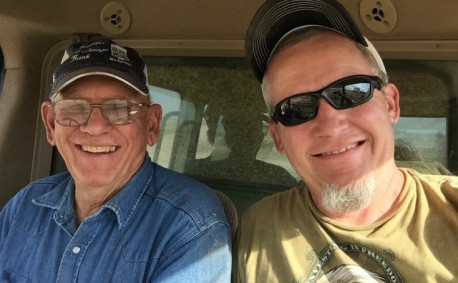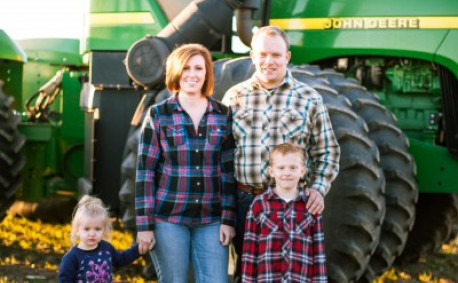Spotlight on Winter Wheat
Wheat is wheat, right? Unless we’re gluten-intolerant, we tend not to think too much about this common grain. But here in Kansas, ‘tis the season for winter wheat.
Winter wheat—wheat that is planted in the fall and harvested in the early summer—makes up about two-thirds of the wheat produced in the U.S.
Historically, farmers planted wheat in the spring (called “spring wheat”) and harvested it in late summer. But, as we all know too well, Kansas summers can be quite hot and dry, so the climate here is better suited to winter wheat. In fact, almost all of the wheat grown in Kansas is winter wheat.
Winter wheat is usually planted in September or October. It sprouts, then becomes dormant in the winter cold (ideally under snow). Winter wheat must go through vernalization, or a period of exposure to cool temperatures to trigger its reproductive development. In the spring, the sprouts wake back up and begin growing again.
Many farmers grow multiple crops. For some, once soybean harvest is over in October, they turn right back around and prepare their fields to plant winter wheat. Learn more about what farmers are up to this time of year by traveling along in a tractor to see how wheat is planted using an air seeder.
Wheat Seeds
A wheat seed is called a kernel. There are about 15,000 kernels of wheat per pound and it typically takes 45 to 90 pounds of wheat to plant an acre. That’s a lot of kernels for farmers who might have thousands of acres to plant!
And they must get them just right. The kernels should be planted about 1.5 inches deep. To get that depth, farmers can only drive their tractors about 5 mph. This helps ensure there’s enough pressure to get the seeds down that far and that the soil doesn’t lift back up while they’re planting.
Different Types of Wheat
Wheat seeds are categorized as hard and soft. Hard wheat is usually higher in protein and is used to make hearty breads. Soft wheat is lower in protein and is used to make foods that are fluffy and crumbly, like cakes, crackers and cookies. All-purpose flour contains a mixture of hard and soft wheat.
Meet Some Wheat Farmers
Now that you know some basics of planting wheat, get to know some of the farmers who grow wheat around Kansas.
More About
- Fun facts:
- Winter wheat makes up about 67% of the wheat produced in the U.S.
- Winter wheat is planted in September and October.
- Harvesting winter wheat happens during the summer.
- Where you can find it: Different types of winter wheat are grown throughout the U.S., but Texas, Oklahoma, Kansas, Colorado and Nebraska together make up the largest contiguous area of winter wheat production in the world.
- Dislikes:
- Soil that is too dry.
- Wheat pests, such as fall armyworms and Hessian flies.
- Wheat diseases, such as rust, mildew, smut.
- Likes:
- Soil that is just right with about 1 to 3 inches of moisture.
- Snow cover during the winter months when the temperatures are below freezing.




